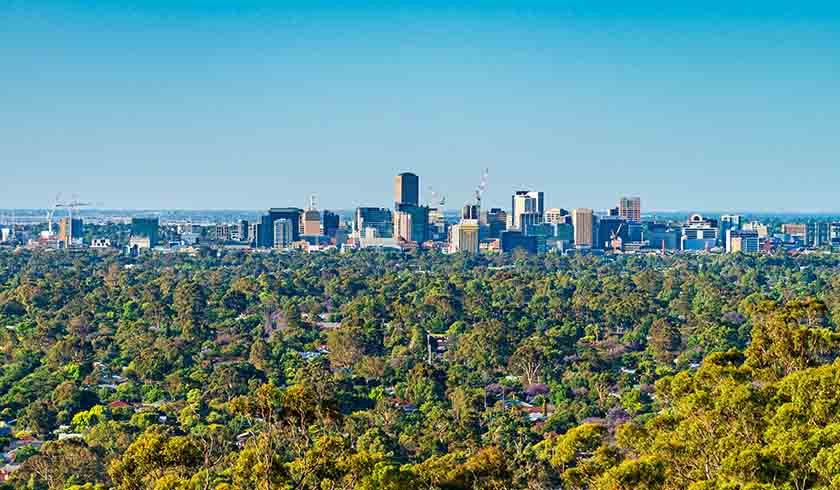Capital city rundown: Property from the renter’s perspective
A new report has revealed the unique circumstances affecting renters across each of Australia’s capital cities and how this might bode for investors in the coming year.

The Domain rental report for December 2019 has highlighted which cities are proving popular with renters, the median rental property prices and the factors that are set to influence the market into 2020.
Here they are:
Sydney
December was a month of good news for renters in Australia’s largest city.
According to Domain, rents remained unchanged for the December quarter and fell over the entire year.
Median weekly asking rents for a house fell by 2.8 per cent – a $15 drop per week to $525.
Unit rent prices fell 3.8 per cent – a $20 drop per week to $510.
It means median house rents are now $25 below their 2017-18 peak, while unit rental prices are $40 below peak levels.
Despite Sydney maintaining its status as the most expensive capital city to rent a unit, Canberra is not far behind, it was noted.
Rental yields: Have risen slightly across houses and units in Sydney when prices are compared to 12 months ago. Domain has attributed this to property prices having fallen by more than rents.
However, yields are likely to fall again in 2020, despite rents being expected to rise again in 2020 as fewer new apartments join the development pipeline.
Melbourne
Like Sydney, Melbourne’s renters have been in for an unchanged quarter, with median rent prices still trending 2.3 per cent lower than they were at the same time last year.
House rents have been unchanged at $430 for the last three quarters and are at the same level as they were heading into 2018.
Median asking unit rents are sitting at $420 per week, which is $10 higher than they were at the end of 2018.
Rent on a typical unit has increased 11 per cent over the past three years to reach this point, it was reported, despite the city’s apartment construction boom also having occurred.
Domain outlined that Melbourne’s robust population growth means demand for rental properties remains strong and will likely mean rents will rise modestly in 2020.
Relative to other locations, Melbourne’s vacancy rate has remained relatively low despite a slight increase over the past 12 months.
Rental yields: Have risen modestly for houses and units, but Domain has noted that yields are likely to fall in 2020 as interest rates full further and property prices increase.
Brisbane
Queensland’s capital saw a marginal tightening of the rental market across 2019.
According to Domain, median weekly household rents rose by $5 in the December quarter – now sitting at $410 per week.
Unit rental prices increased by the same amount – the typical unit now is renting for $385 per week.
New construction has kept “a lid on rents” over the past few years, with rents remaining around $400 to $410 for houses since 2014.
Unit rents are showing a similar story – rental prices have hiked just 4 per cent since 2014.
Rental yields: While rental yields for houses have been “broadly steady”, Brisbane’s units have seen better value for investors looking for growth.
Domain noted rental yields for units in the city as having increased from 5.1 per cent to 5.4 per cent over the past year as unit prices fell while rents rose.
Adelaide
The city of churches has seen modest increases to median house and unit rents over the 12 months to December 2019.
Domain flagged that rising rents and a low vacancy rate (sitting at just 1 per cent) show the competitiveness of the capital’s market.
House rents rose by $10 – or 2.6 per cent – over 12 months to sit at $390.
Unit rents increased by 1.6 per cent over the same period, with a typical Adelaide unit now renting for $315 per week, making Adelaide the second-cheapest capital city to rent a unit.
Despite the bargain, Domain did report that both house and unit rents have increased by nearly 10 per cent over the past three years, showcasing the third-fastest rent growth of all capital cities.
Rental yields: Have “risen modestly for both houses and units”, according to Domain.
This has been attributed to steady property pricing combined with rental price rises.
Perth
Asking rents across Perth remained steady in the December quarter despite a tightening market in the longer term.
Domain reported that house and unit rents both rose by 3 per cent over the year.
Median house rents now sit at $370 per week, which is $20 higher than it was during the trough reached in 2017-18.
Unit rents sit at $310 per week, which is $10 above their respective trough.
It’s reminiscent of the trend seen in Perth rental prices for the past few years, and means Perth is the cheapest capital city to rent a typical house and unit.
Rental yields: Have risen for Perth houses and units over the past year.
This has been due to a fall in property prices coupled with rising rents.
Domain noted that the city’s rental market is rebounding off the back of an improvement to the state economy and a pick-up in population growth.
While not good news for renters, “it is a clear sign that the Perth property market is at a turning point”, according to the report.
Hobart
The report observed Hobart’s rental market to be “under significant pressure” and creating very difficult conditions for renters.
Median house rents lifted 9.5 per cent over the year and now sit at $460.
Unit rents increased by 7.9 per cent to reach $410.
Hobart is also home to the lowest rental vacancy rate, at just 0.6 per cent.
Despite this, the 2020 outlook “is more promising for renters”, Domain offered, with an increase in construction and a larger number of building approvals.
Rental yields: Investors have seen only modest increases over the past year due to increasing house prices, Domain reported.
Canberra
The Australian capital saw a sharp increase to asking rents at the end of last year.
Canberra house rents rose 3.6 per cent over the last year, ending the year at $580 per week.
It led to Domain labelling the city as “the most expensive capital city to rent a house by a substantial margin”.
Unit rents also increased – by 2.1 per cent over the year to sit at $480.
The result means both house and unit rents have now grown by 16 per cent and 14 per cent, respectively, over the past three years.
Rental yields: Domain expressed a belief that rental yields “will likely stabilise in 2020 as interest rates fall and property prices rise” after seeing a modest rise in 2019.
Darwin
Up north, median house rents fell by 1 per cent over the past year, while unit rents fell by 2.5 per cent.
It means median house rents are now sitting at $495, while units are priced at $390 on average.
While rents fell overall, Domain noted that rents have risen in recent quarters.
Rental vacancy rates have also been seen to drop, with Domain indicating the rental market might be close to a turning point.
Rental yields: Despite the not-so-stellar results, Darwin’s rental market has provided investors with a slight improvement in rental yields – which rose slightly as property prices fell by more than rents.

